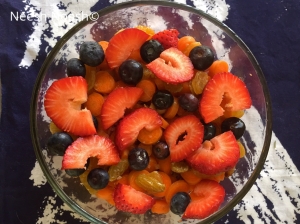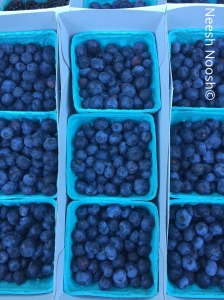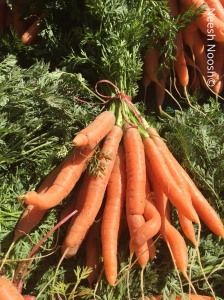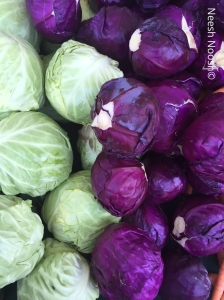Terumah describes the construction of the Tabernacle, a holy place where God dwells. Initially, the parsha seems rather dry: tiny details for lengths, colors of fabrics, types of materials and so forth. But a deeper read illuminates so much about the Israelites, their relationship to each other and to God through the construction of the Tabernacle.
God says Moses to “bring me gifts; you shall accept gifts for Me from every person whose heart so moves him” (25:3). Rabbi Abraham Isaac Kook asks: “Why did God command Moses to take the donations? The
verse should read that they must give an offering!” He continues, “So why did God command that these gifts for the Tabernacle, the first act of tzedakah (charity) on a national level, be donated solely out of sincere generosity?”
He explains that God asked for donations instead of offerings because, “By donating our time and money, we express our inner qualities of chessed and kindness in a concrete and tangible manner. The act of tzedakah actualizes our traits of generosity and contributes toward our own spiritual growth.” The Israelites acts of tzedekah were spiritually transformative.
Rabbi Yoel Glick explains: “The Rabbis tell us that in the act of charity, the one who gives receives a greater blessing than the one who receives. This is because this act of charity enables the individual to purify and uplift his own nature. It provides him or her with an opportunity to develop their higher nature. Gimilut Hasadim [acts of loving-kindness], therefore, is ultimately about self-transformation. It is about transforming ourselves into fitting instruments to uplift the world.”
Like the Israelites, we constantly have opportunities to do acts of charity and thereby uplift the world. Our nation has millions of citizens living in deep poverty and the inequality amongst citizens is the worst since the Great Depression. According to Forbes, “the wealthiest 160,000 families own as much wealth as the poorest 145 million families, and that wealth is about 10 times as unequal as income.” Poverty is often invisible to us in our daily lives: we don’t necessarily see the person struggling to put food on the table for their family, keep their electricity on, and/or to pay rent. But, it exists in every city, town and rural community across the country.
And, we each have a responsibility to respond to others living in poverty. Rabbi Dr. Aryeh Cohen explains that “The world belongs to God and we can only keep it once everyone has enough. Giving tzedakah and responding to their vulnerability is a spiritual practice; it reinforces my responsibility towards other people.” There are countless individuals and groups providing tzedakah to struggling Americans. One group, Jewish Family Service of Los Angeles, provides emergency food and temporary housing, assistance for senior citizens, services for victims of domestic abuse and much more. Their vital work helps people living at a precipice, to survive. As Rabbi Jonathan Sacks comments, “it is what we do for others, not what others or God does for us, that transforms us.”
The dish I made for this week is made with neat stacks of vegetables, like the rainbow of materials meticulously crafted for the construction of the Tabernacle. Dr. Stephen Geller writes, “The Tabernacle represents the created order that replaced chaos. The building of the sacred space was a plan, carried out with deliberation.” Try carefully chopping the vegetables into uniform pieces. This is about cutting like a sushi chef. Yes, it’s a slow process, but it brings a sense of meticulousness to the preparation process.
The array of colors and tastes also reflects the many parts that comprise the Israelites. Commentary in Etz Hayyim notes that the “the Tabernacle is symbolic of the Israelites. They too are composed of many parts, but they must form one harmonious whole.”
Tabernacle Salad
Ingredients
1/2 purple onion, thinly sliced
1/3 small purple cabbage, thinly sliced
5 radishes, thinly sliced
5 orange carrots, sliced into rounds
1/4 cup golden raisins
1/2 pint blueberries
4 strawberries, thinly sliced
2 tbsp olive oil
1/2 lemon juice
pinch of salt
Preparation
1. Wash all vegetables and fruit. Cut into thin slices. (The fruit and vegetable combination might seem like a strange combination but they contrasting flavors compliment each other)
2. Arrange neatly in layers in a bowl, following the order of ingredients as listed above.
3. Add olive oil, lemon juice and salt.
B’tayavon!







Wonderfully inspiring once again. I will be bringing your salad to Shir Hadash’s Erev Shabbat potluck this week in Milwaukee! Thank you and Shabbat Shalom!
LikeLiked by 1 person
thank you and wonderful to hear that you will prepare the dish–I hope everyone enjoys it 🙂 Shabbat shalom!
LikeLike
inspiring and yummy
LikeLiked by 1 person
thank you!
LikeLike